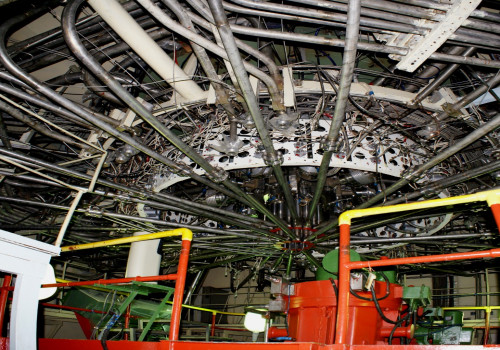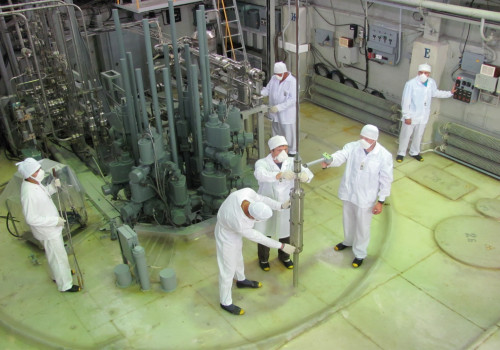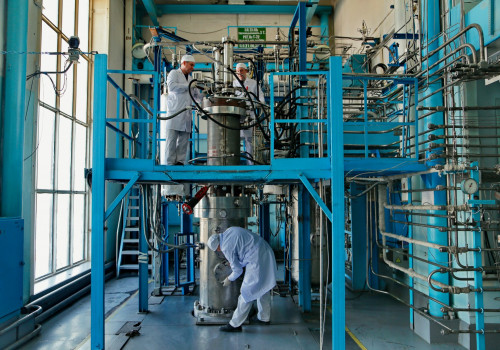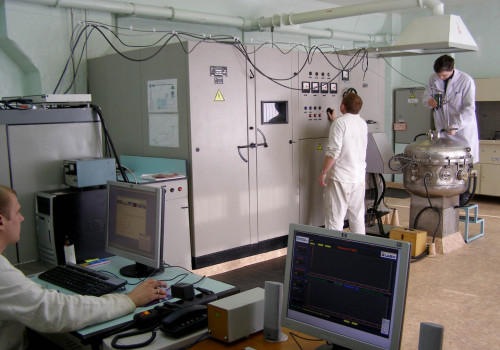30 projects to the 30th anniversary of NNC RK!
04 May 2022




Thirty years ago, the National Nuclear Center of the Republic of Kazakhstan has started to implement the most important tasks in the field of peaceful use of atomic energy. Since then, an ongoing development process has begun. Over a historically short period of time, with the participation of highly professional specialists, it was possible to successfully solve a complicated set of issues on elimination of nuclear tests infrastructure and consequences of nuclear weapon tests as well as to establish a scientific, technological and personnel base for the development of nuclear energy in the Republic of Kazakhstan. Today, we are proud of strong scientific potential, our well-defined development strategy, and our professional team. We proved that we are capable of achieving various goals and can successfully overcome all difficulties.
In our publications, you can read about 30 major projects of a company over its 30-year development history.
Project # 1. 1993-2022
Creation and upgrading of experimental capability to justify reliability and safety of nuclear and fusion power
The National Nuclear Center is the owner of the modern experimental base to substantiate reliability and safety of nuclear and thermonuclear power facilities.
These are two research reactors, experimental benches and facilities, ionizing radiation sources repository, Kazakhstan's Material Testing Tokamak KTM, as well as STS as the largest nature laboratory in the world.
When establishing the National Nuclear Center of the Republic of Kazakhstan, the development of experimental base that focused on substantiation of reliability and safety of nuclear power received a new powerful impetus, while the main customers of these works in the 90s years of the last century become foreign, mainly Japanese scientific organizations and industrial companies. At the reactor experimental complexes of the National Nuclear Center, the implementation of a wide range of experimental studies has begun and is successfully continuing to support the safety of nuclear and thermonuclear power facilities. For these purposes, along with research reactors IGR and IVG.1M, out-of-pile experimental benches and facilities (such benches as ANGARA, EAGLE, VChG, PPU, etc.) are used.
IGR reactor is a unique source of neutrons with flux density that is in several orders of magnitude higher than this value in any of the civilian power reactors. This quality of IGR reactor makes it possible to realize a wide range of extreme loads modes on NPP reactors fuel that can occur during severe accident and thus provide the ability to simulate emergency operating conditions for NPP fuel up to its melting. The reactor is used for experiments under such projects as EAGLE (Japan), BREST (Russia), and the preparations are underway for the experiments under SAIGA program (France).
IVG.1M reactor (LIANA bench, PROTON-1 ampoule, etc.) has been used since 1993 to the present time as part of international cooperation on the ITER international thermonuclear experimental reactor project to study the selection of candidate materials for its first wall and blanket as well as to study the interaction ITER structural materials with hydrogen isotopes under reactor irradiation (hydrogen permeability characteristics, accumulation and release of hydrogen and its isotopes from materials). After the completion of reactor core conversion (2023) to the low-enriched uranium, these studies are going to be continued.
ANGARA bench with LAVA-B multi-functional facility, that was constructed in 2010 on the basis of LAVA/SLAVA facilities (1993), is designed to study the final phase of severe accidents in water-cooled reactors. LAVA-B facility enables to obtain up to 60 kg of corium melt with the temperature up to 3200 K and provides with the wide range of possibilities to study the corium interaction with water, reactor vessel materials, concrete, materials of protective cover of melt catchers, including simulation of residual energy release in the melt. Experiments have been carried out at the bench upon the following programs: COTELS, IVR-AM, INVECOR, CORMIT, Fukushima Debris (Japan).
In 2000 EAGLE bench operation has started, where experiments have been carried out in substantiation of prospective sodium-cooled fast-neutron reactor safety, that is under construction in Japan. EAGLE bench provides with the possibility to determine parameters of melt moving at its interaction with sodium, study of cooling conditions and melt fragmentation in sodium pool, melt cooling conditions at its periodic drying and flooding with sodium and others).
HFG-135 bench is designed to realize highly temperature, up to 3000°С, materials testing and research using small samples. HFG-135 bench provides with possibility to measure electro-physical properties, phase transitions temperature, study the corium highly temperature interaction with structural materials and obtain corium compact bullions of required composition. It is mainly used for small-scale experiments in addition to large-scale ones, conducted at ANGARA and EAGLE benches.
Simulation bench with plasma-beam facility is developed to simulate peripheral plasma of tokamaks in diverter area and to study its interaction with the surface of construction materials. Plasma-beam facility (PBF) is the only facility in the Republic of Kazakhstan designed to study plasma physics and plasma-surface interaction. Currently, projects have been implemented on assessment of the resource in operation of structural beryllium, modification of tungsten plasma-facing surface and study the properties of tin-lithium eutectic in conditions of hydrogen and deuterium plasma impacts in substantiation of tritium safety. Material testing complex is equipped with up-to-date equipment and devices: mini milling machine with CNC, automatic honing machine, scanning electron microscope with energy-dispersive spectrometer, stereoscopic and metallographic microscopes, automatic micro- and macro-hardness testers, universal testing machines, facility for thermogravimetric analysis and other devices and equipment, meeting all modern requirements for results quality of the material testing analysis process, occurring during electrothermal or reactor modeling of severe accidents in power reactors.
Latest news by category:
-
Participation in IAEA International Fusion Research Council Meeting on Controlled Thermonuclear Fusion
25 December 2025
-
NNC RK Participated in CIS Commission Meeting on Peaceful Use of Atomic Energy
17 December 2025
-
Pivotal Role of Kazakhstan in Global Thermonuclear Fusion Research
17 December 2025
-
Enhancing Human Resources Development with Support of JAEA
09 December 2025